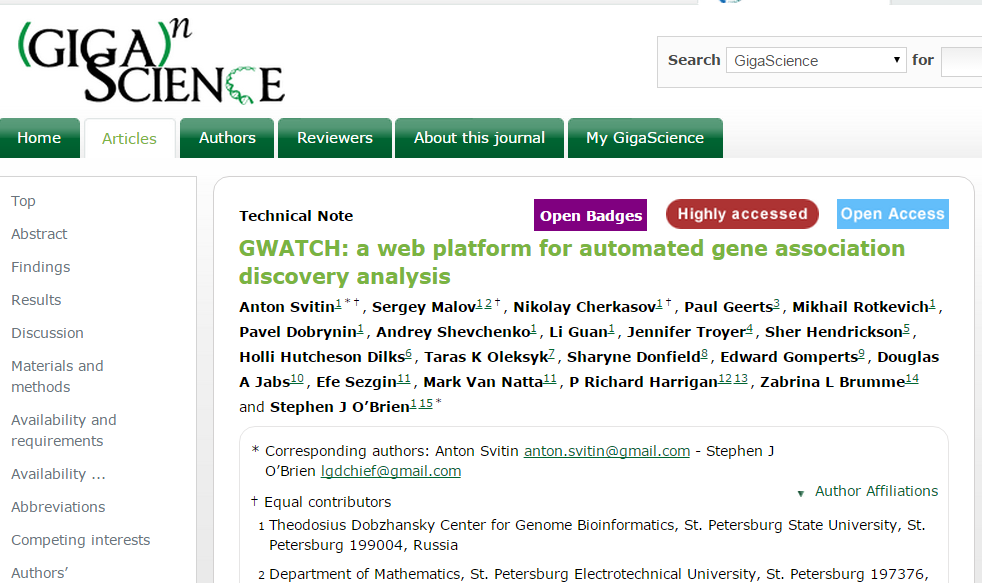
bioRxiv, the preprint server for biology, recently turned 2 years old. This seems a good point to take a look at how bioRxiv has developed over this time and to discuss any concerns sceptical people may have about using the service.

bioRxiv, the preprint server for biology, recently turned 2 years old. This seems a good point to take a look at how bioRxiv has developed over this time and to discuss any concerns sceptical people may have about using the service.

“ To enable a conversation over the world’s knowledge ” is the slogan for Hypothes.is, a open annotation layer that allows anyone to annotate anything.

Seek and Deploy. If you’re a user of GigaDB (and why wouldn’t you be!) you’ll perhaps have been wondering why the search function is so slow and often missing obvious results! Well even if you’re not wondering, I can tell you that this has now been fixed.

In the first post in this series I identified a series of challenges in scholarly publishing while stepping through some of the processes that publishers undertake in the management of articles. A particular theme was the challenge of managing a heterogenous stream of articles and their associated heterogeneous formats and problems, in particular at a large scale.

**That Was The Review Week That Was **If you’ve seen the #peerrevwk15 hashtag on social media, you may have noticed this week is the first ever Peer Review Week.

Today, GigaScience launched a project providing an alternative way to give authors credit for their work, contributing more to collaboration, transparency and better data. Amye Kenall tells us more about what this is and how it works. There is a clear need for better transparency and credit around authorship. In the current system researchers are evaluated by publications and the Impact Factor of journals in which they appear.

This post follows on from a previous post on citation distributions and the wrongness of Impact Factor.
Science has infected itself (voluntarily!) with a life-threatening parasite. It has given away its crown jewels, the scientific knowledge contained in the scholarly archives, to entities with orthogonal interests: corporate publishers whose fiduciary duty is not knowledge dissemination or scholarly communication, but profit maximization.

What does Neuroinformatics and The Great Barrier Reef have in Common? Both are faced with challenges and comprise of beautiful colourful entities that should be freely accessible and shared. This year’s International Neuroinformatics Coordinating Facility (INCF) Neuroinformatics 2015 meeting was held in the northern tropical Queensland city of Cairns, Australia.

{.alignright .size-medium .wp-image-551 loading=“lazy” decoding=“async” attachment-id=“551” permalink=“https://quantixed.org/jcbdiet/” orig-file=“https://i0.wp.com/quantixed.org/wp-content/uploads/2015/07/jcbdiet.jpg?fit=603%2C2586&ssl=1” orig-size=“603,2586” comments-opened=“1”